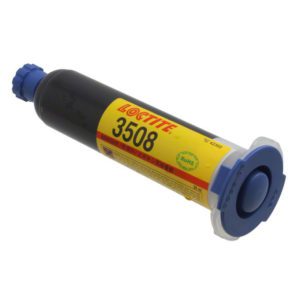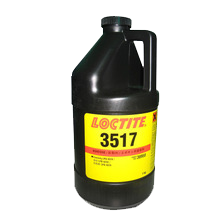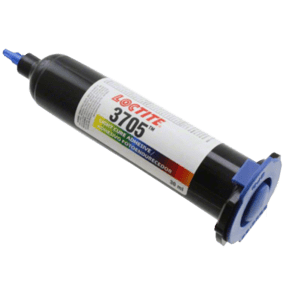Flip chips are a mainstay of modern electronic construction. They provide a way to miniaturise and speed production of electronic devices, as well as increase performance. Epoxies are used almost universally with flip chips to improve reliability of construction. Depending on the application, different epoxies and methods of application can be used to maximise efficiency and quality.
What are flip chips?
Flip chips are a type of Integrated Circuit (IC) chip, or die, that is defined by the method of connection. Rather than connecting via wires bonded to the leads on the chip, flip chips connect directly to printed circuit boards (PCBs) via connective bumps in a ball grid array (BGA). These connective bumps are added to wafers during manufacture, and then the chip is “flipped” upside down onto connections on the board. Once the chip has been placed, solder is reflowed to connect the chip. This allows a number of advantages over traditional bonding, including easier heat dissipation, increased computing speed and smaller overall footprint. Because of the proliferation of handheld and other miniaturised devices, flip chips have become the standard for these types of applications.
How is epoxy used in Flip Chip applications?
Epoxy is mostly used in flip chip assemblies to provide physical support for the chip and solder bonds. Solder bonds are susceptible to failure for a number of reasons. Physical shock, of particular concern in frequently dropped handheld devices, can easily cause damage to delicate solder connections. Another major concern is thermal expansion – because circuit boards and chip wafers have different coefficients of thermal expansion (CTE), heating or cooling can cause expansion and contraction that puts stress directly on the connection between the two. At the extremely small size of the connections (around 75 microns) this movement can cause damage.
To combat these stresses, epoxies are often employed in various ways to reinforce the solder bonds. Epoxies can be used to completely fill the space under chips – known as underfilling, or can be used at the edges or corners of a chip to provide different levels of support.
Underfill epoxies
 Underfill applications involve filling the void around solder connections with an epoxy resin. When filled in this way the cured resin strengthens the solder bonds and connects the chip to the PCB directly – insulating it from physical shock. Because the space between the chip and PCB is so small, it can be difficult to underfill assemblies. This is usually achieved with specially designed epoxies that cover the interior space via capillary action after being dispensed via needle or other method around the edges of the chip.
Underfill applications involve filling the void around solder connections with an epoxy resin. When filled in this way the cured resin strengthens the solder bonds and connects the chip to the PCB directly – insulating it from physical shock. Because the space between the chip and PCB is so small, it can be difficult to underfill assemblies. This is usually achieved with specially designed epoxies that cover the interior space via capillary action after being dispensed via needle or other method around the edges of the chip.
Underfilling is also highly effective at reducing damage due to thermal shock because of differing CTE. Fillers can be added to epoxy that lower the CTE while retaining high Tg and elasticity. Underfilled chips and PCBs act more like a single unit, where the epoxy evens out expansion and contraction, lowering stress on solder bonds. Additionally, underfilling provides environmental protection – effectively sealing solder bonds from moisture and contaminants.
While underfill applications usually provide the highest reliability assemblies, they are also usually the slowest and most difficult process. Specialised equipment must be used for dispensing and curing, and except with no-flow epoxies, must be applied after solder reflow. Reworking may also be more difficult, and curing times must be factored in. All of these can reduce throughput or increase costs. While still the best option for assemblies in critical applications, other options exist when higher throughput is needed.
Edge and corner bond epoxies
Edge bonding and corner bonding is another option to strengthen flip chip assemblies. Rather than underfilling the entire chip, epoxy can be placed around the edges or at the corners of the chip assembly, providing some resistance to physical and thermal shock. Because epoxy doesn’t need to flow underneath chips, a wider range of more traditional epoxy can be used, including some surface mount technology (SMT) adhesives. Depending on the application, SMT dispensing equipment can be used for this purpose, further reducing cost and increasing throughput. Edge and corner bonding also has the advantage of being exposed – which allows the use of UV curing adhesives. UV curing adhesives can greatly speed production, since they cure quickly with exposure to UV light, instead of via chemical or heat cure with traditional underfills.
No-flow epoxies
 No-flow, or fluxing, epoxies are an alternative to capillary fill. These epoxies are applied before solder reflow and cured as a part of reflow heating. In addition to polymer resins, they contain fluxing materials like organic acids that aid the soldering process. Because separate steps in application and curing aren’t required, they offer an increase in speed of production, while maintaining the high levels of reliability offered by underfills. They also don’t require multiple applications, which are sometimes necessary with capillary underfill epoxies. Fluxing epoxies can be applied by printing or stamping, as well as jet dispensing, depending on the specific application. Alignment must be more accurate with no-flow epoxies however, since realignment through soldering is more difficult with the added epoxy. No-flow epoxies also generally have low or no filler content, which raises their CTE – so they may not be an option in all assemblies.
No-flow, or fluxing, epoxies are an alternative to capillary fill. These epoxies are applied before solder reflow and cured as a part of reflow heating. In addition to polymer resins, they contain fluxing materials like organic acids that aid the soldering process. Because separate steps in application and curing aren’t required, they offer an increase in speed of production, while maintaining the high levels of reliability offered by underfills. They also don’t require multiple applications, which are sometimes necessary with capillary underfill epoxies. Fluxing epoxies can be applied by printing or stamping, as well as jet dispensing, depending on the specific application. Alignment must be more accurate with no-flow epoxies however, since realignment through soldering is more difficult with the added epoxy. No-flow epoxies also generally have low or no filler content, which raises their CTE – so they may not be an option in all assemblies.
Reworkable v. non-reworkable
In addition to the various types of application and formulation, epoxies used in die-attaching can either be reworkable or non-reworkable. Because soldering operations are not 100% reliable, sometimes defective assemblies are produced. If a non-reworkable epoxy has been applied, generally it’s impossible to remove and reattach the die. Reworkable epoxies allow chips to be removed after underfilling and then resoldered. Another option is to test solder connections before applying an underfill, but this can be a prohibitive cost to throughput speeds. Reworkable epoxies usually work by softening at high-temperature, allowing chips to be removed. The decision about if and when to use a reworkable epoxy depends on the cost of the final assembly, reliability of soldering and throughput needs.
Other specialty epoxies
Because of the rapid pace of technological advancement, new methods for die attaching and bond strengthening are always being developed to meet current needs. New formulations that allow flip-chip attachment onto flexible circuits are available, providing protection and flexibility for those applications. Epoxy flux compounds are also available that encapsulate individual solder connections. Whatever the combination of factors, including throughput speeds, reliability requirements and chip-board interactions, epoxy formulations are available to meet those needs.
 Shop Epoxy Encapsulants & Underfills here.
Shop Epoxy Encapsulants & Underfills here.
The content for this month’s blog post was provided by Gluespec® – a partner of Ellsworth Adhesives.
Gluespec helps engineers to discover adhesives and other materials for their industrial applications.

